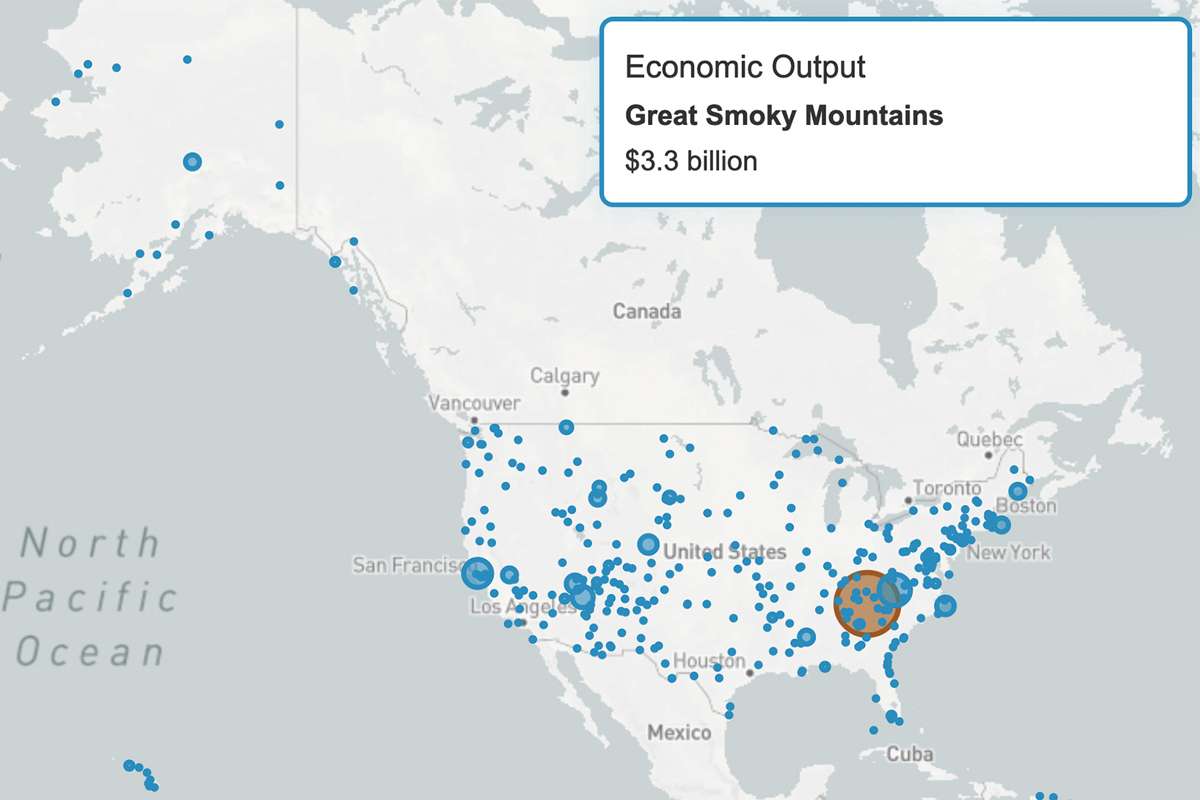Smokies, Parkway visitors spend the most in the NPS, study finds
 The Great Smoky Mountains National Park, followed by the Blue Ridge Parkway, spurred more visitor spending than any other national park in 2022. NPS graphic
The Great Smoky Mountains National Park, followed by the Blue Ridge Parkway, spurred more visitor spending than any other national park in 2022. NPS graphic
According to the recently released results of the National Park Service’s newest peer-reviewed visitor spending analysis, in 2022 North Carolina was yet again home to the nation’s two top parks for visitor spending — the Blue Ridge Parkway and the Great Smoky Mountains National Park.
The parks were two of only four NPS units to break the $1 billion mark in visitor dollars spent in communities near the parks. The study shows that Smokies visitors spent $2.1 billion in local communities while Parkway visitors spent nearly $1.3 billion. Despite both the Parkway and the Smokies sharing their visitor spending total between two states, visitor spending in North Carolina propelled the state to have the second highest total at $2.5 billion, right behind California with $2.7 billion. Tennessee was fourth with $2.1 billion.
Total spending from Smokies visitors jumped to $2.1 billion in 2022 from $1.3 billion in 2021, an increase due at least partially due to the most recent analysis incorporating new survey data from the park. Previous spending estimates were calculated by using generalized trip and spending data from other parks, but the new survey data shows that Smokies visitors stayed longer in gateway communities and spent more money than generalized estimates indicated. This year the analysis also attributes a more conservative portion of time and spending if the park was not a person’s primary reason for visiting the area.
Lodging accounted for the biggest chunk of visitor spending, at 47%, followed by restaurants at 17% and recreation and retail, each of which accounted for about 10%. In addition to the estimated $2.1 billion of direct spending, the study estimated that the park had a total economic output of $3.3 billion and supported 32,590 local jobs.
The Blue Ridge Parkway’s estimated $1.3 billion in visitor spending brings it even with 2021, when spending was also estimated at $1.3 billion. Lodging accounted for 44% of that figure, followed by restaurants at 22% and gas at 12%. The study estimated that the Parkway’s total economic output, including secondary effects, was $1.7 billion, and that it supported 17,800 local jobs.
Related Items
Nationwide, national park units spurred $23.9 billion in direct spending, supporting 378,400 jobs, of which 314,600 jobs were found in gateway communities. The cumulative benefit to the U.S. economy was $50.3 billion, the study found.
An interactive tool allowing users to explore the new data, along with year-by-year trend data, is available at nps.gov/subjects/socialscience/vse.htm.
— Holly Kays, Outdoors Editor









